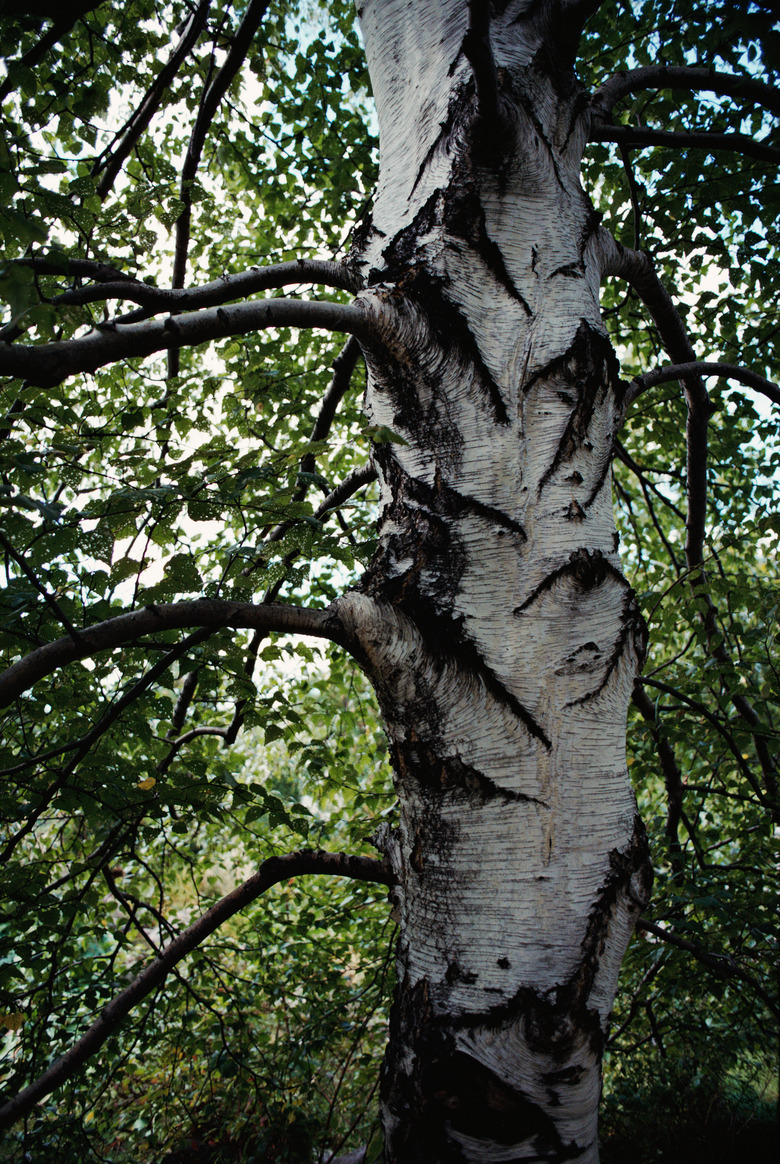American Beech Tree Adaptations
The American beech, or Fagus grandifolia, is the only member of the genus Fagus found in North America. The species is often one of the major deciduous forest plants.
It lives in the east from southern Canada to Florida and as far west as Arkansas. Even in dense forest, the American beech is easily distinguished from other trees by its distinctive traits such as gray bark and elliptical leaves.
Basic Description
Basic Description
American beeches live 300 to 400 years, grow 70 to 80 feet tall and can be more than 3 feet around. They are recognized by their smooth, light gray bark. American beech trees retain this smooth texture their entire lives.
In shady forests, beeches grow up long and straight with small, dense crowns of foliage. In open, sunny areas beech trees develop shorter trunks with horizontal branches and wide foliage crowns. This is one adaptation that allows them to thrive in various habitats and environments.
American beeches have wide, shallow root systems well-adapted to locations with moist soil such as bottom lands, shady ravines and areas near creeks and streams.
Leaves
Leaves
The American beech's leaves are about 2 1/2 to 6 inches long and about 1/2 inch across. They have an elliptical or oval shape, parallel rows of veins and toothy edges. The leaves are dull green on top and light green on the bottom.
In the autumn, the leaves turn yellow or brown and may stay on the trees throughout the winter. When they fall off, they decompose slowly and are found in thick layers beneath the trees. This helps them conserve water and energy in the winter months.
Flowers and Nuts
Flowers and Nuts
American beeches flower in early spring around the same time the leaves begin unfolding. Beeches have both male and female flowers. The small, yellow male flowers clump together in small balls.
The tiny female flowers have reddish scales and form near the ends of new twigs. After pollination, the female flowers form into brown, triangular, edible nuts covered by prickly burs.
The burs open after the first frost and the heavy nuts fall from the trees. Some are carried away by rodents, others are carried away by blue jays and some roll downhill. However, the nuts generally aren't dispersed that far from the parent.
This adaptation of burs allows deciduous forest animals to play a key role in the reproduction of the tree. Burs will often get stuck to the fur of animals in the forest.
As the animals travel and move around the environment, the burs will be dispersed and spread throughout the areas. This helps beech trees disperse their offspring around the forest better than if only natural elements like wind and water were used for dispersal.
Reproduction
Reproduction
The nuts germinate above ground from the early spring to early summer. Germination is more successful on mineral soil or soil covered in fallen leaves than on excessively moist soil. Soil contains organic matter called humus.
American beeches germinate best in soil containing more humus, or humus that forms in soil with little activity by worms or other small animals.
American beech seedlings grow best in areas covered by a moderate amount of forest canopy or well-protected small open areas. The soil in large open areas is often too dry. American beeches can also reproduce through sprouting from the trunk or roots.
Sprouts from the roots, called suckers, can feed from the root system and have better chances of surviving than the seeds.
Cite This Article
MLA
III, Frank B. Chavez. "American Beech Tree Adaptations" sciencing.com, https://www.sciencing.com/american-beech-tree-adaptations-12002079/. 18 June 2019.
APA
III, Frank B. Chavez. (2019, June 18). American Beech Tree Adaptations. sciencing.com. Retrieved from https://www.sciencing.com/american-beech-tree-adaptations-12002079/
Chicago
III, Frank B. Chavez. American Beech Tree Adaptations last modified March 24, 2022. https://www.sciencing.com/american-beech-tree-adaptations-12002079/
